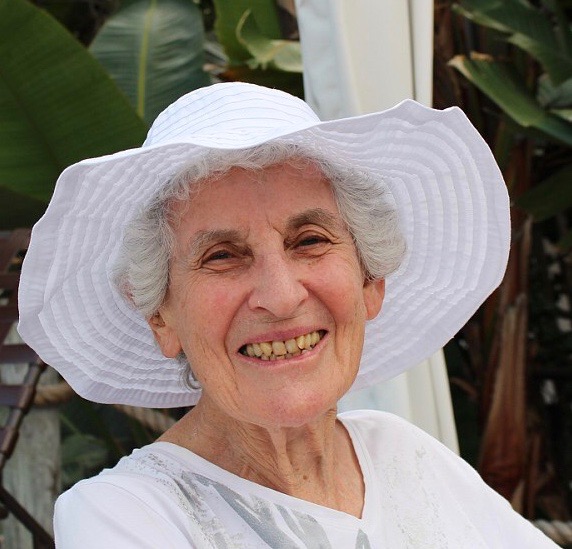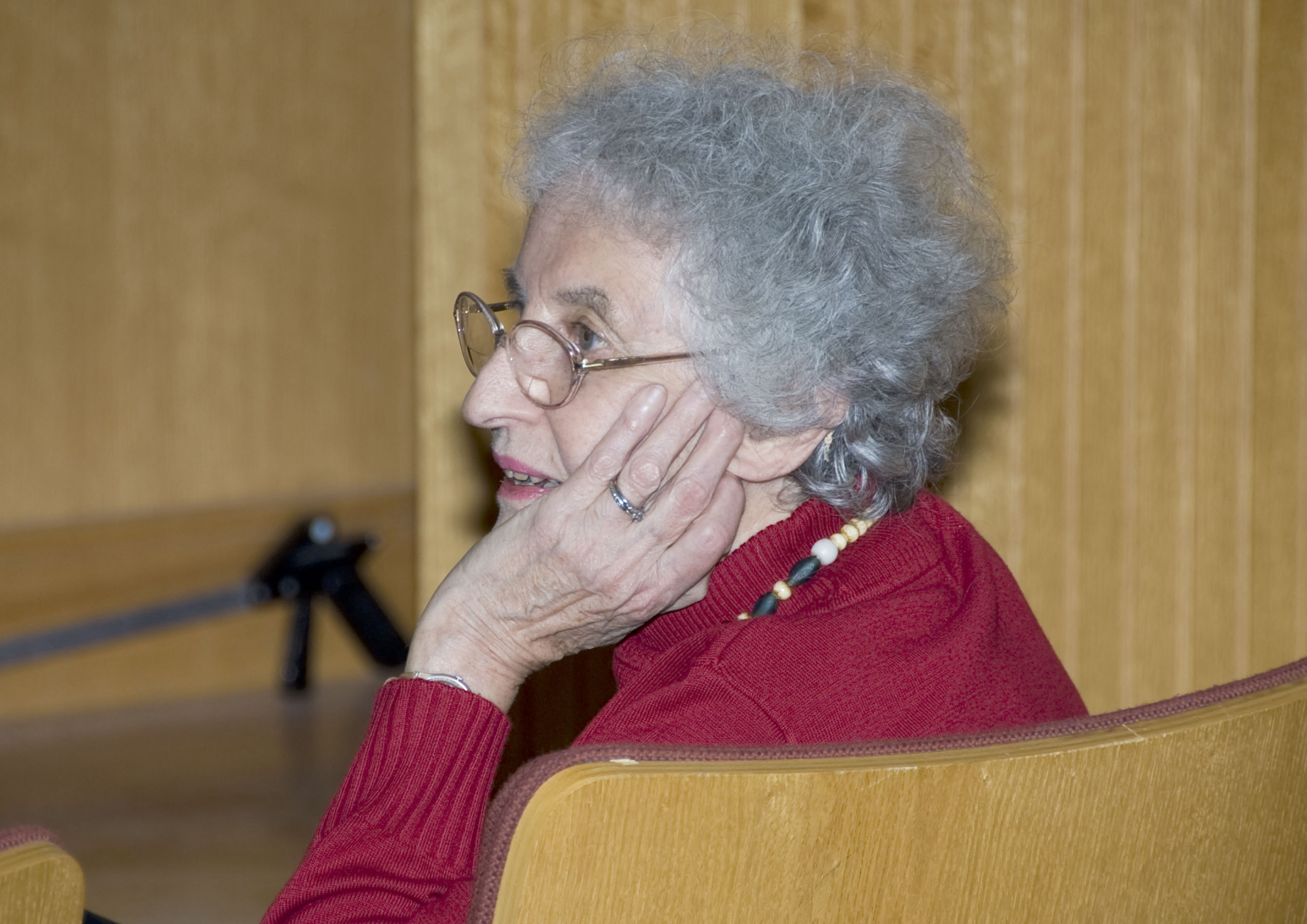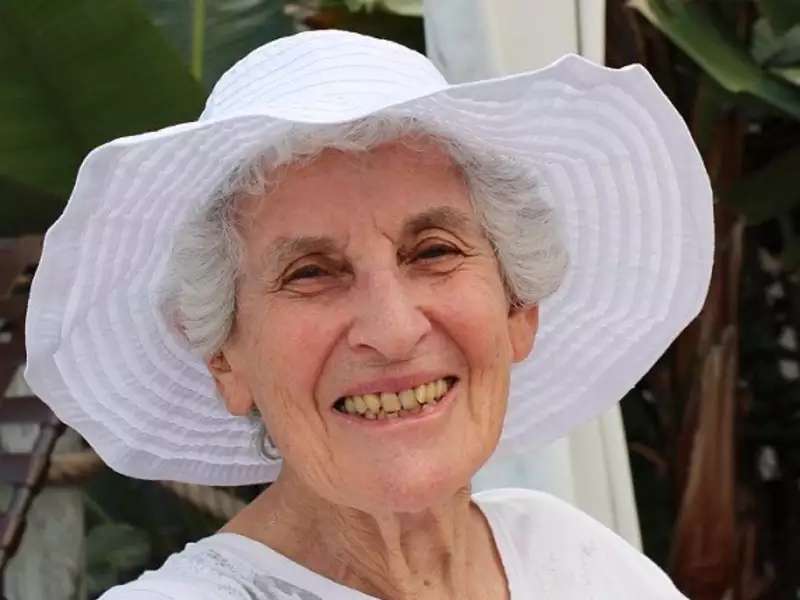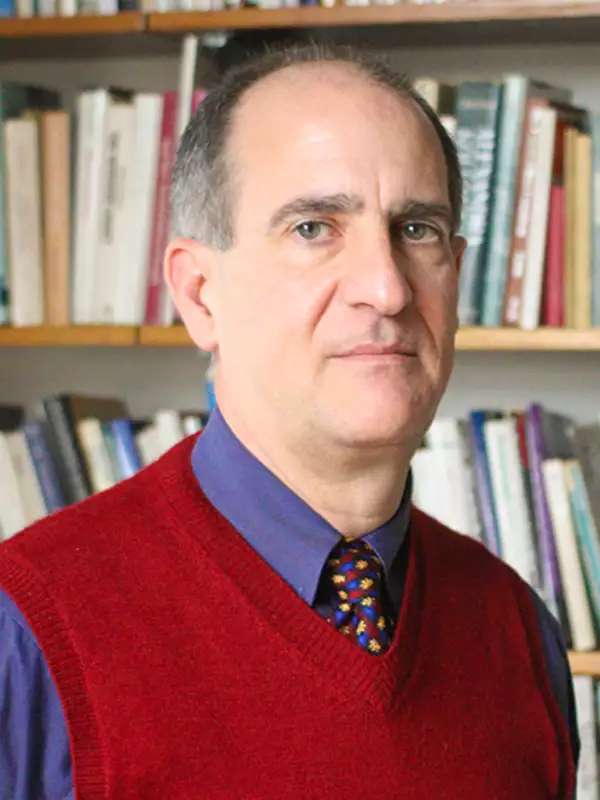[Main photo (above): Birman, teaching at Columbia in 1985.]
There is no shortage of women earning doctoral degrees, but less than 30% of those are in math, according to the National Science Foundation. Joan S. Birman ’48, pioneering mathematician and research professor emerita at Barnard and Columbia, defied statistics with a career that continues to add up. On April 26, at age 94, she was elected to the National Academy of Sciences (NAS) — as one of 120 new members, 59 of whom are women — for distinguished and continuing achievements in original research. This was the organization’s largest-ever cohort of new female members. Birman has been at the height of her career for decades, even though the journey required some calculation.
The third of four daughters, three of whom graduated from Barnard as STEM students — including math major Helen Lyttle Kimmel Kimball ’42 and physics major Ruth Lyttle Satter ’44 — Birman married Joseph L. Birman in 1950, worked in labs, then parented her three children, returning to graduate school as a part-time Ph.D. student at the Courant Institute at New York University and receiving her Ph.D. in 1968. She had earned a master’s degree in physics from Columbia in 1950.
When Birman returned to Barnard as faculty in 1974, she did so as a major contributor to braid and knot theory, after publishing two groundbreaking research papers in 1969, effectively introducing what became known as the Birman exact sequence. She’s also credited with introducing the first comprehensive book on the subject, Braids, Links, and Mapping Class Groups, published by Princeton University Press in 1974.
As more evidence that she comes from a STEM-loving family, Birman said her eldest sister, Helen, endowed the Helen Lyttle Kimmel ’42 Professor of Mathematics chair in honor of Birman; the position is currently held by Dusa McDuff, who also won the inaugural Ruth Lyttle Satter Prize in Mathematics in 1991, established by Birman to honor her sister Ruth’s memory, after her death at age 66. In 2017, Birman and her husband endowed the Joan and Joseph Birman Fellowship for Women Scholars at the American Mathematical Society to support research by women in mid-career. Over the years, Birman has mentored Columbia Ph.D. students with their theses, including Nancy Wrinkle ’95, associate professor of mathematics at Northeastern Illinois University, with whom Birman says she is currently collaborating. Even though she retired in 2004, Birman is also mentoring a high schooler.
She is affiliated with nearly two dozen organizations and has received many honors, including a Doctor of Science Honoris Causa from the Israel Institute of Technology (1995) and the New York City Mayor’s Award in Science and Technology (2006).
In the Q&A below, Birman reflects on her research and career.
What inspired you to enter your specific field of research, and how would you explain braid and knot theory to people unfamiliar with it?
My grandmother taught me to knit, crochet, and weave as a child, and my mother taught me to sew. Those were recreational activities that I enjoyed all my life. When I discovered that the tools of mathematics could be used to study generalizations of the familiar braids in a girl’s hair, and also knots and pattern weaving, I was very interested. My Ph.D. thesis was about the mathematics of braids.
The familiar braid in a person’s hair is made from three strands. Take strands one and two and cross strand one over strand two. Then take strands two and three and cross them, with strand two passing under strand three. Keep repeating this over-under crossing pattern, and you’ve made a long braid. More complicated braids can be made with four, or five, or six or more strands, with any two adjacent strands passing over or under one another. Braids form what is called a “group” in mathematics. The tools of mathematics can then be applied to tell you a great deal more about braids. And if you make any braid, with any number of strands, you can bring the top around to the bottom and then you will get one or more intertwined knots. That’s where the applications arose to study knots. In fact, every knot can be obtained in this way.
What are your thoughts on being elected by the NAS at age 94?
I am grateful for this honor, delighted to join distinguished colleagues I have known for many years, and very interested in the public activities of the NAS. My only regret is that my husband is not here to share this honor with me. He was very supportive of my career, proud of everything I did, secure in his own professional achievements and his work on human rights. He would have loved to have joined me at the inauguration festivities for the NAS next April in Washington, D.C.
Why did you decide to work on a Ph.D. 15 years after graduating from Barnard?
My initial goal was not a Ph.D. but simply to refresh my knowledge so that I might return to the work I had been doing 20 years earlier on analogue computers for aircraft guidance systems. At first, I was just a part-time student taking refresher courses in the evenings, with my husband taking over home duties. A teenager who lived across the street would watch our children while I was studying in the afternoon. Then I thought, “Well, one course went very well, maybe I can handle two,” and began to get more involved with it. But I still did not have the goal of becoming a teacher-scholar. After a few years of part-time studies, my NYU advisors told me, “You've taken a lot of courses, enough for a master’s degree, but in addition you have to pass our M.A. qualifier.” So I found out what the requirements were and studied for the exam. When I passed that exam, my advisor told me that not only did I pass the master’s final but I passed well enough for it to be a Ph.D. qualifier. That’s when life changed. The Courant Institute at NYU offered me a fellowship to be a full-time student, and I used the money to hire adult help with household chores [so that I] was able to work more. The more I learned, the more interested I became in more advanced mathematics.
Are there moments throughout your career that really stand out for you?
Yes. They were the rare moments of finding my creative voice; the moments of discovery of the solution to an open problem. The problem that I solved for my thesis was one instance, and another occurred later, during my first job at Stevens Institute, where I was teaching engineering students. I had lunch, often, with a colleague on the faculty, and during those lunches we talked about an unsolved problem in mathematics that I had encountered during my Ph.D. studies. We understood the question but did not see how to answer it; we were stuck. We were stuck almost all of that year. Then one day, near the end of the spring semester, we had an idea about how to look at the problem in a very new way. Mathematicians call that moment the “aha moment.” It’s a beautiful experience — you did not know how to solve a puzzle, and all of a sudden you get an idea and realize that there’s a new way to look at the puzzle that changes everything. The moment of discovery is exhilarating, and in this case, it was a shared moment with my colleague, and that made it even better. We had the idea together! The joy in creative work, both alone and with others, has been among my greatest pleasures in life. The discoveries themselves — the two that I talked about and others that followed — underlie my election to the NAS.



